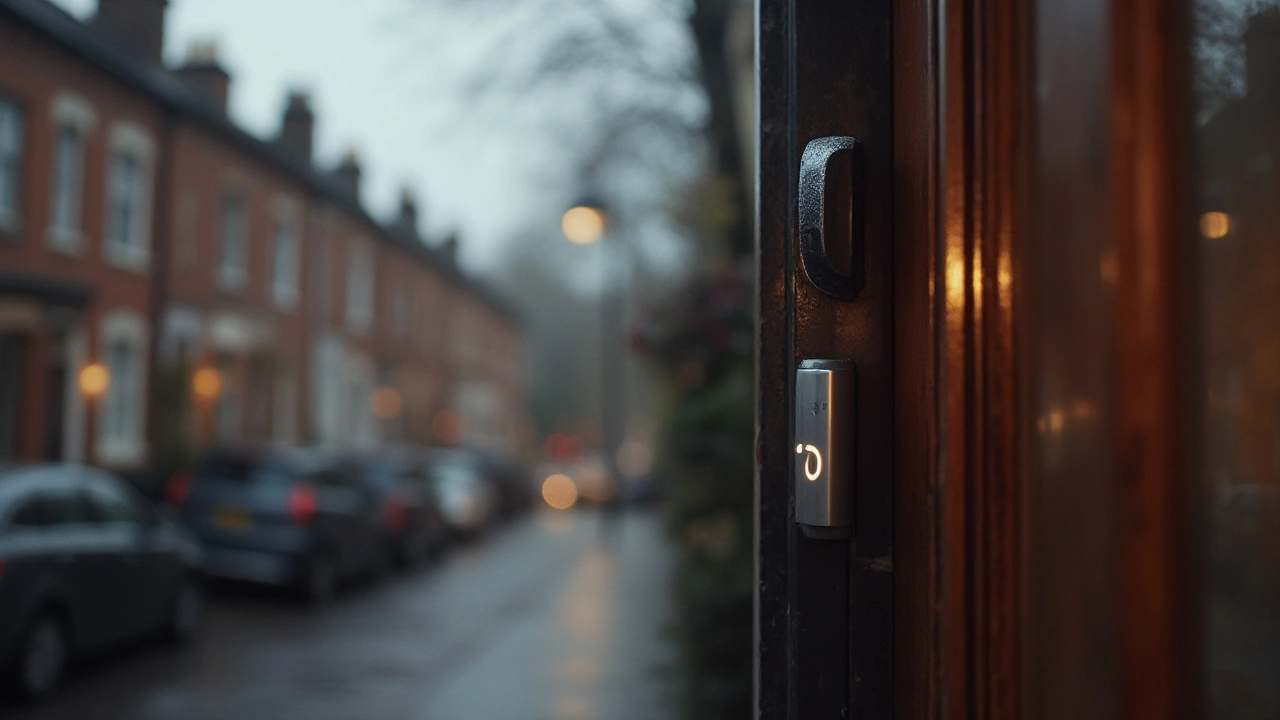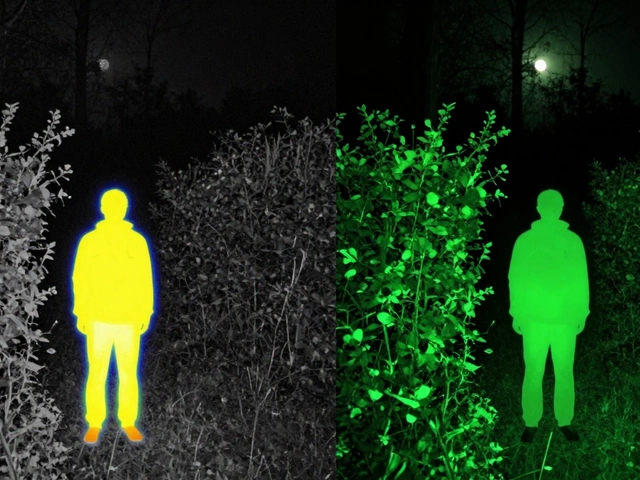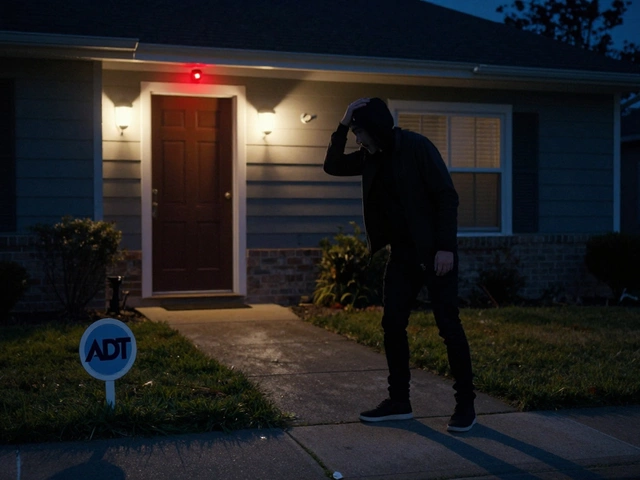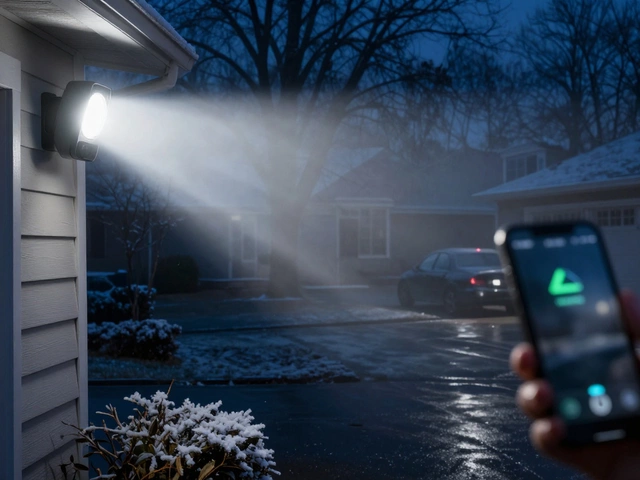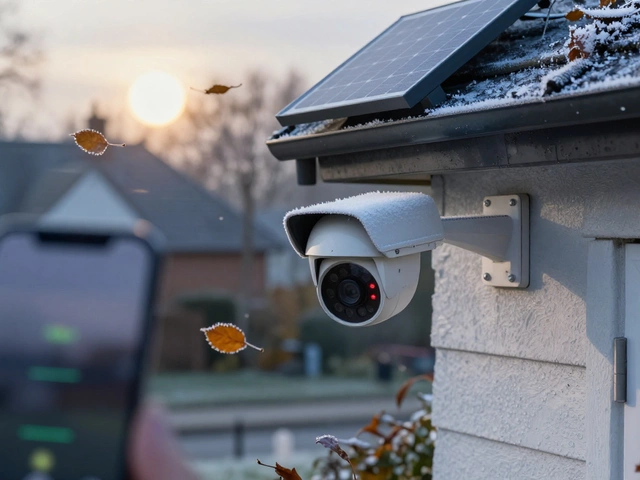Picture this: you’re home after a long day, scrolling through your phone, and you spot a delivery person on your porch via your Ring doorbell app. Naturally, you start wondering—does your Ring doorbell always capture everything happening outside, or are there quiet moments when it’s not keeping watch? The idea of a security camera missing something important (like a stranger poking around late at night or your dog Rex going bonkers at a raccoon) is enough to make anyone anxious. You're paying for peace of mind, so it only makes sense to expect your gadget to be on its toes 24/7. Let's break down what actually goes on with Ring doorbells, what gets stored (and what doesn't), and how you can make your device work smarter for your home.
How Ring Doorbells Record: The Actual Process
Many folks are surprised to find out that Ring doorbells—whether the classic Video Doorbell, the Pro models, or the nifty battery-powered versions—don’t record every single second. That’s right. Out of the box, Ring uses what’s called “event-based recording.” This means the camera only wakes up and records when it detects motion, when someone rings the bell, or when triggered by you remotely. So, those hours when your street is silent or Rex is napping in the sun? The doorbell isn’t filming a thing. According to Ring’s help center, "Ring doorbells are not designed for continuous, always-on recording." This saves battery life and limits data traffic, but it also means gaps if something quick slips past its radar.
Why the event-based approach? Constant recording would chew through your Wi-Fi bandwidth, fill up Ring’s cloud storage fast, and, in battery models, make you a slave to recharging. Most folks don’t want that tradeoff, especially if your Wi-Fi is like mine and struggles when too many devices get chatty at once. Some Ring doorbells plug into power, making non-stop recording possible in theory, but the company’s standard software keeps it to events—even for those wired models. The only time Ring flirts with continuous recording is with their “Snapshot Capture” feature, which takes still images at intervals (every 30 seconds to three minutes, depending on your settings), giving you a sort of time-lapse instead.
That gap between snapshots? It’s a blind spot, plain and simple. If something happens two seconds after a snapshot is taken and doesn’t trigger the motion sensor, you’re out of luck for video evidence. The only workaround: subscribe to Ring Protect, which stores your videos for later access. Still, all you get are clips tied to motions and rings—not true 24/7 footage. Here’s a quick look at how Ring’s event-recording stacks up against other popular brands:
| Brand & Model | Continuous Recording? | Cloud Storage Options | Power Source |
|---|---|---|---|
| Ring Video Doorbell Pro 2 | No (event-based) | Yes (with subscription) | Wired |
| Google Nest Doorbell (wired) | Yes (up to 10 days, with subscription) | Yes | Wired |
| Arlo Essential Video Doorbell | No (event-based) | Yes | Wired/Battery |
| Eufy Video Doorbell 2K | No (event-based) | Yes (local/cloud) | Wired |
So, if you’re thinking of catching every single moment, you’ll want to look past Ring, at least for now. Google Nest Doorbells are the exception to the rule—they actually offer round-the-clock video history (with a Nest Aware subscription and a wired setup). Ring, on the other hand, keeps things leaner. If this surprises you, you’re definitely not alone—plenty of Reddit threads from last year saw people venting that their doorbell totally missed a package thief because motion detection glitched or they didn’t have the right setting turned on. Ring rep Mark Melvin even told CNET:
"Ring’s event-based model was created to balance privacy, battery life, and bandwidth demands for all users."
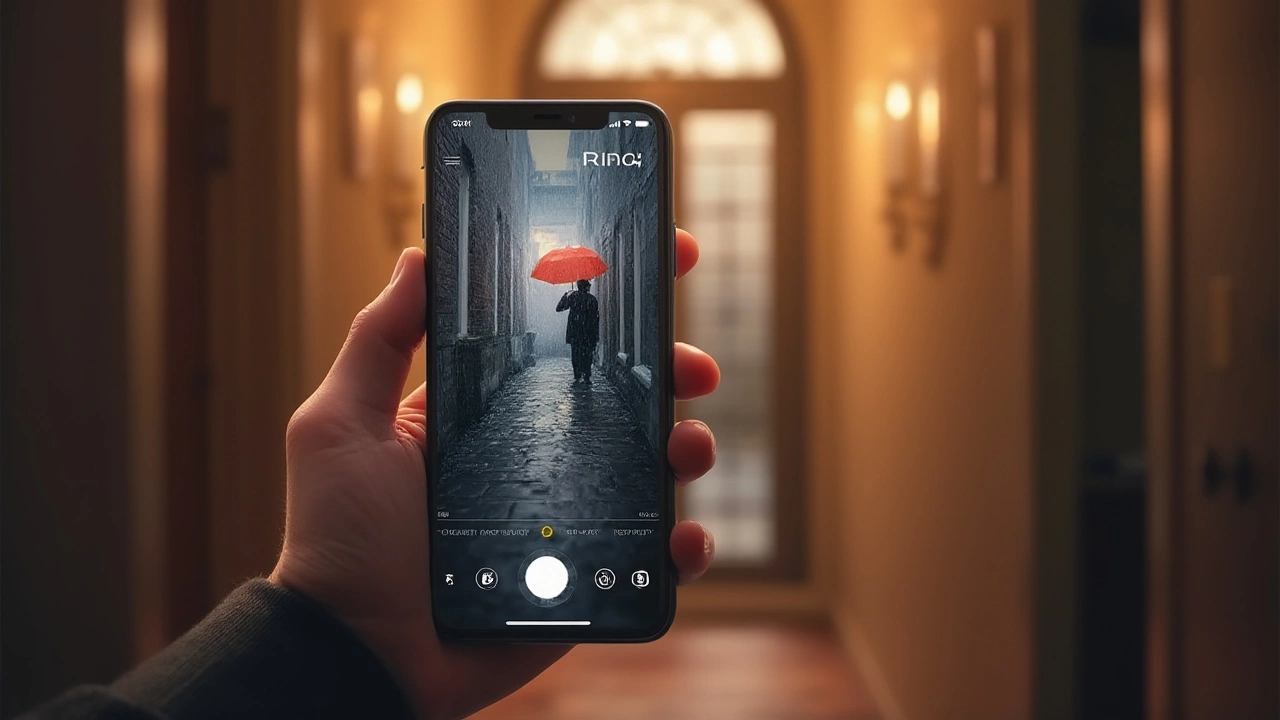
Why It Doesn’t Record Continuously (And What You Can Do About It)
So, what exactly is stopping your Ring from acting like Big Brother, recording every second of every day? The main issues are hardware and software limitations plus privacy concerns. Continuous video isn’t only a tech hurdle (think: storage, battery), but also a privacy hot potato. Can you imagine your neighbor finding out you’re secretly recording every second of them fumbling to find their keys or your dog Rex playing in your front yard? Ring tries to strike the right balance—keeping your house safe without going full surveillance state. Besides, storing days’ worth of HD footage would need a warehouse-sized server if everyone was doing it. Even with a paid Ring Protect subscription, you get only triggered clips stashed in the cloud, not a 24/7 replay button.
Yet, the technology is inching closer every year. Snapshot Capture is a halfway measure, letting you see brief glimpses between the triggered events. Want more? You can tighten up your motion settings. Dive into the Ring app’s Motion Zones and Sensitivity sliders. By adjusting these, you can snag more footage when anything (suspicious or otherwise) comes close. Maxing out sensitivity means your device grabs almost every movement, though expect a flood of notifications—when Rex runs by or a leaf falls, you’ll know it. If you really, really need every moment covered, consider pairing your Ring with an actual security camera system that offers continuous recording. Some savvy users even install a second camera (like a DVR-wired system) pointing in the same direction as their Ring. That way, you still get the convenience of the Ring interface and notifications but also true 24/7 coverage from a dedicated camera—peace of mind times two.
Let’s talk privacy, though. Not everyone’s crazy about the idea of their porch being streamed and stored non-stop. Cities like San Francisco have actually put restrictions in place about how long people and companies can keep security footage. Even Ring has rolled out more robust privacy tools, like customizable Privacy Zones (you can block out the neighbor’s window digitally in your view), and finer controls over video and audio recording during certain hours. If you’re renting, check your lease; some landlords have rules about constant surveillance. And definitely tell your neighbors you have outdoor cameras. It can save you a lot of awkward porch conversations—or angry knocks at your door.
If you still hope Ring will someday launch always-on mode, keep your eyes peeled. As of July 21, 2025, there’s no sign they’re planning it for mainstream doorbells. Some business models (like banks or big-box stores) have beta-tested continuous cloud recording, but those systems are more expensive and designed for totally different needs. For now, event-recording plus snapshots is your best bet with Ring. If that’s not enough, it’s wise to consider one of the hybrid or pro cameras mentioned earlier—or go all-in on a system that suits your obsession with knowing everything that happens out front.
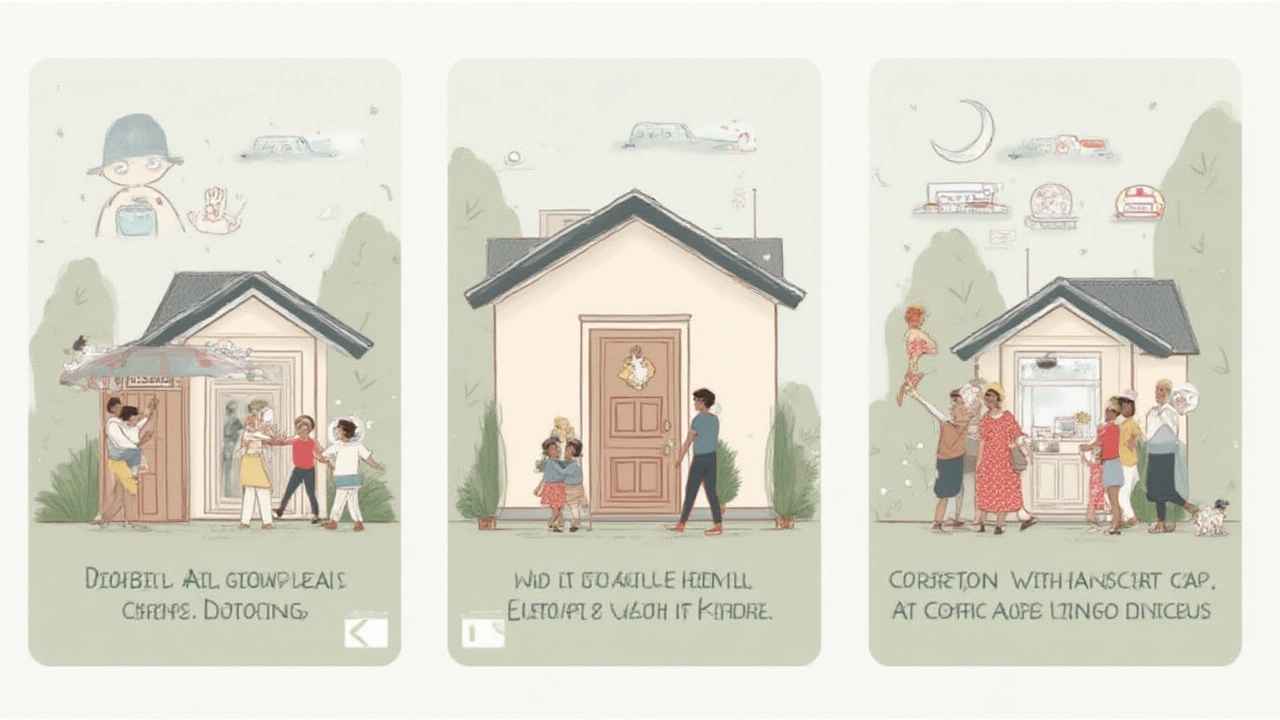
Maximizing Security with the Ring Doorbell: Tips and Real-World Advice
If you want to wring every ounce of security from your Ring doorbell, you’ve got options—beyond just hoping its motion sensors don’t snooze through an important moment. Be smart with camera placement: the higher you mount your Ring, the better its field of view. Angle it just enough to see faces (not just the tops of heads!) and entryways. Use the app’s pre-roll feature on supported models—it adds a short video that starts recording a few seconds before motion is triggered, so you’re less likely to miss those quick footstep bandits or overzealous delivery drivers.
Ditch the "set it and forget it" mindset. Every few weeks, check on your device. Wipe off the lens (I’ve found enough nose prints from Rex to obscure a crime scene), ensure your Wi-Fi signal is strong near the door, and review your clips. You might find blind spots or a car always blocking the action during certain hours. If your notifications are blowing up, tweak the zones and sensitivity settings again, so you’re not bombarded when it’s windy but still grab anything suspicious.
Power plays a big part in performance. If you use battery-powered models, keep spare batteries charged up and swap them out regularly, especially in colder months (lithium batteries drain quicker in the winter, as I’ve painfully learned on many snowy mornings). For wired Ring Doorbells, check now and then that your wiring’s solid—old homes can have loose connections that cause you to miss recordings entirely. Don’t ignore the software updates—Ring’s engineers roll out upgrades pretty often, sometimes adding new privacy features or improving motion detection algorithms. The last big update in March 2025 improved detection for smaller animals, perfect if you’ve got curious pets setting off false alarms.
Keep your subscription active if you want your event clips stored for more than a day. The free plan only lets you watch events in real time—a big letdown if you want to check back on something odd that happened while you were away. With Ring Protect, videos are saved up to 180 days, depending on your region. Here’s a pro tip: if you catch something serious (like a theft or trespasser), download and save the relevant clip locally ASAP, before it expires or is overwritten. Law enforcement will want the original, highest-quality file.
For privacy-minded folks, Ring’s app lets you disable audio recording and set up recurring privacy schedules. That way, your porch isn’t a 24/7 sound monitor. If you’ve got guests coming over, or you’re hanging out in the yard, consider muting motion alerts temporarily to avoid notification overload. And if you ever decide to sell your Ring or change houses, factory reset the doorbell first, so your video history and account access don’t go to someone else unintentionally.
All Ring doorbells come with built-in encryption and regular security updates. Even so, use a strong, unique password for your account, and turn on two-factor authentication. This stops would-be hackers from messing with your settings or peeking at your footage. In 2023, there was an uptick in hacking attempts on various smart home cameras, not just Ring. By locking down your account, you’re a far less attractive target.
Curious about usage data? According to Ring’s 2024 customer survey, the average user gets about 9 motion alerts per day, but only keeps about 18% of their captured clips longer than a week. Most folks check their app at least once daily—often more when a new puppy or baby joins the family. If you’ve got shared users (spouse, roommates), make sure everyone knows how to use the alerts and clip review, so you don’t have twenty duplicate notifications about the same Amazon package or, in my case, four blurry videos of Rex chasing the same squirrel. Ring’s user interface keeps getting better, too, so it’s easier to find specific clips if you keep your phone organized.
If you’re still on the fence about Ring, weigh what matters most: do you want an easy, event-triggered camera that’s simple to use, or do you need non-stop footage no matter what? Most people find that Ring’s balanced approach is just right, especially when paired with a strong Wi-Fi signal and a solid subscription plan. For hardcore security fanatics, pairing Ring with another dedicated security cam will patch up any gaps—and make your porch about as secure as Fort Knox, short of a moat. And if all else fails, get yourself a Rex; nothing scares off intruders quite like a barking, tail-wagging home alarm.

